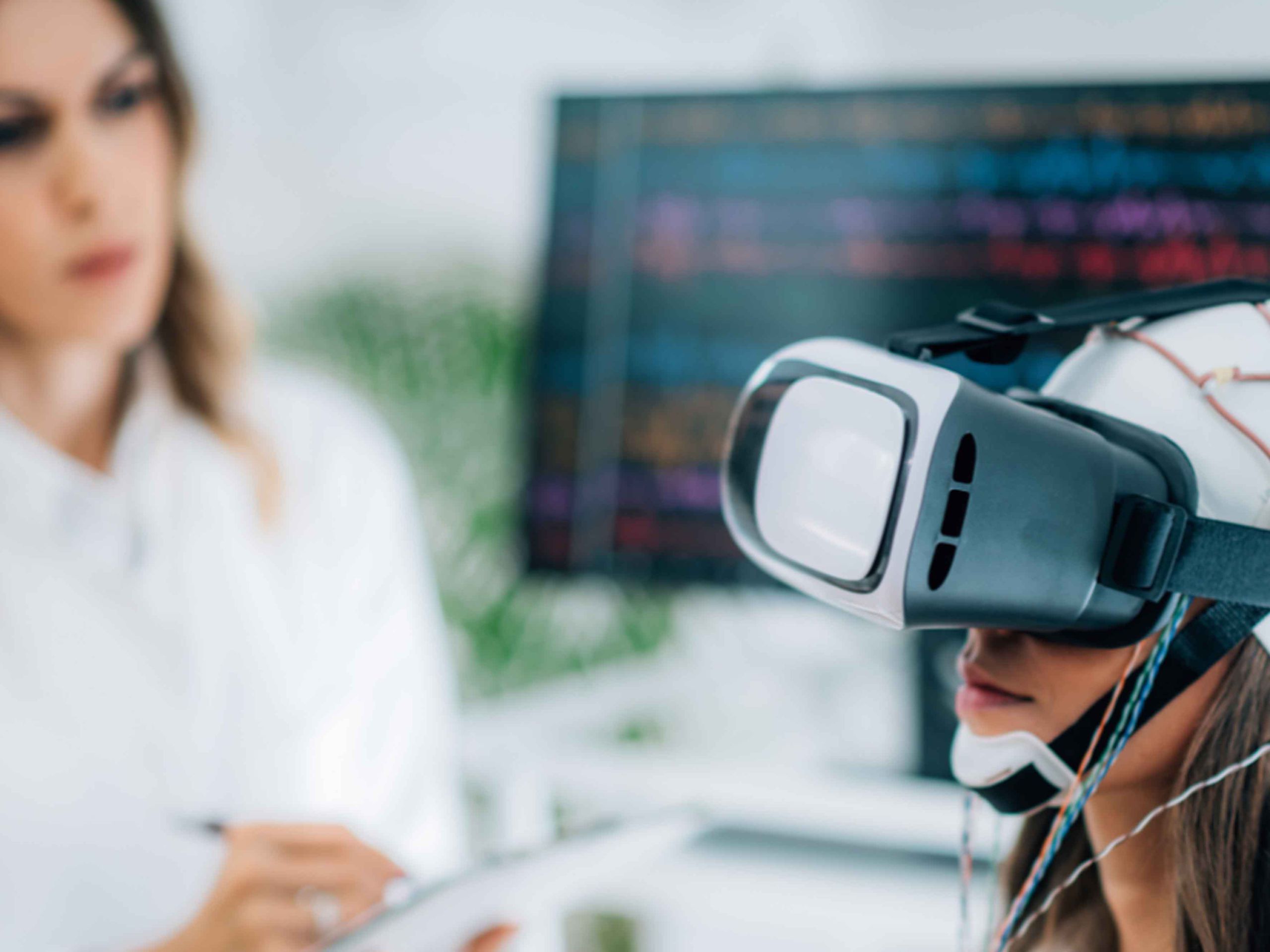

December 11, 2022
The Application of VR in Healthcare
The arrival of modern technology has played an important role in healthcare and transformed it positively. The use of AI, tele doctor consultation, AR/VR, and Robotics has gained traction over time and made its place among health practitioners. Virtual reality is rapidly rising and getting increasingly popular. This technology allows us to explore new worlds and achieve the inconceivable. Nowadays, virtual reality is employed commercially and in the healthcare industry as a training or rehabilitation aid. Healthcare firms consider educating their employees and treating patients at the same time using the latest technology.
Some major benefits of VR in Healthcare are:
VR Against Depression
Virtual reality can be used effectively in psychotherapy to treat phobias or other mental health disorders. The technology enables doctors to establish a controlled environment and place patients in difficult situations that are predetermined for each unique instance to train individuals to overcome their phobias and build confidence. Dread of open or restricted areas, fear of various living organisms, stage fright, apprehension of heights or water, and so on are some examples of obsessions that can be addressed in this manner.
PTSD
Another ailment that may be efficiently cured using virtual reality equipment is post-traumatic stress disorder, which is commonly identified in disaster survivors, war-torn individuals, and anybody who has to function in very stressful situations regularly. VR’s immersive experience may potentially be utilized as a relaxing treatment to treat a variety of worries and stress-related ailments. For instance, Anxiety RelieVR, by Samsung is an example of such an application.
Healthy Lifestyle
Virtual reality’s excellent visual impact may be utilized to teach individuals, particularly teenagers, about the hazardous impacts of activities such as smoking, alcohol and drug misuse, an unwholesome diet, a sedentary lifestyle, and others. Illustrative models may demonstrate how the human body progressively changes as a result of such behaviors, as well as how long it takes to recover, entirely or partially, from the harm. Such visualization provides an understandable and accessible technique for promoting a nutritious diet and encouraging individuals to make changes before it’s too late.

Training
Medical staff training is frequently only possible on-site. Virtual reality may be employed at work as well as in the home. VR can provide insights into complex models and go beyond expectations to serve individuals of all fields.
Virtual reality is also quite simple to utilize. Moreover, the user must be trained and become acquainted with the product. Fortunately, these procedures are performed quickly. The VR lenses must be properly fitted to the head and are properly adjusted. Furthermore, many individuals are unaware that VR may provide a 3D perspective. A simple VR device with 360 visual angles might assist someone to become acquainted with the technology. After that, every user is free to utilize it whenever required.
VR For The Treatment Of Children
Virtual reality healthcare solutions assist to divert children’s attention away from the discomfort they may feel during tests and sample collection, flu injections, and other medical procedures. VR goggles can transport young patients to another world, allowing them to cope with anxieties and concerns more effectively. However, gdpr compliance consulting services are important whenever data is involved in any procedures.
Virtual reality therapy is a new treatment option that has already proven to be incredibly successful for a wide spectrum of patients. This unconventional technique of entertaining and calming is part of the CHARIOT program in the USA and is intended to reduce patients’ anxiety and agony before surgery.
Improving Medical Education
A proper and immersive approach to educating future medical professionals. And training clinicians is one of the most critical aspects of enhancing medicine and making accessible healthcare.
Students may use VR to examine any portion of the human body from different perspectives. And consider locations that would otherwise be hard to reach. This may ease their research and understanding of the medical field.
Virtual Reality in medical also generates training situations that mimic traditional surgical procedures and teaches users how to communicate with the network by providing whose behavior may be altered for a variety of training objectives.
Thus, VR aids in the education of medical students while also preventing practitioners from losing their abilities. It implies that physicians grow more knowledgeable, and medicine becomes more accessible and effective.
Improving Patient Care
Most revolutionary medical procedures are now available through virtual reality. The capacity to observe the human body in depth, for example, is beneficial to doctors and patients. Doctors may use virtual reality to generate patient-specific 360-degree anatomy and show patients the surgical plan for their procedure. This method assists them in improving patient understanding and gaining their trust. Virtual reality may also be utilized to provide psychiatric therapy to patients in any place. For example, teleconsultation doctor may use the technology to create scenarios in which patients confront psychological obstacles, such as a busy shopping plaza, a flight, or traumatic occurrences from the comfort of their homes.







